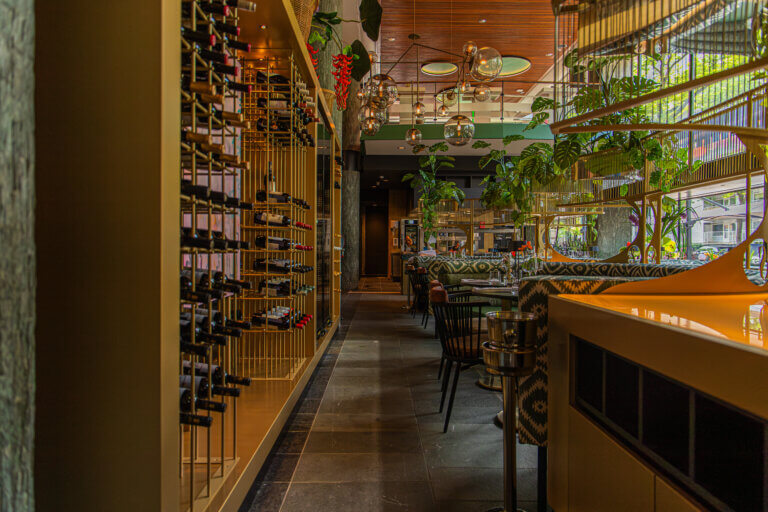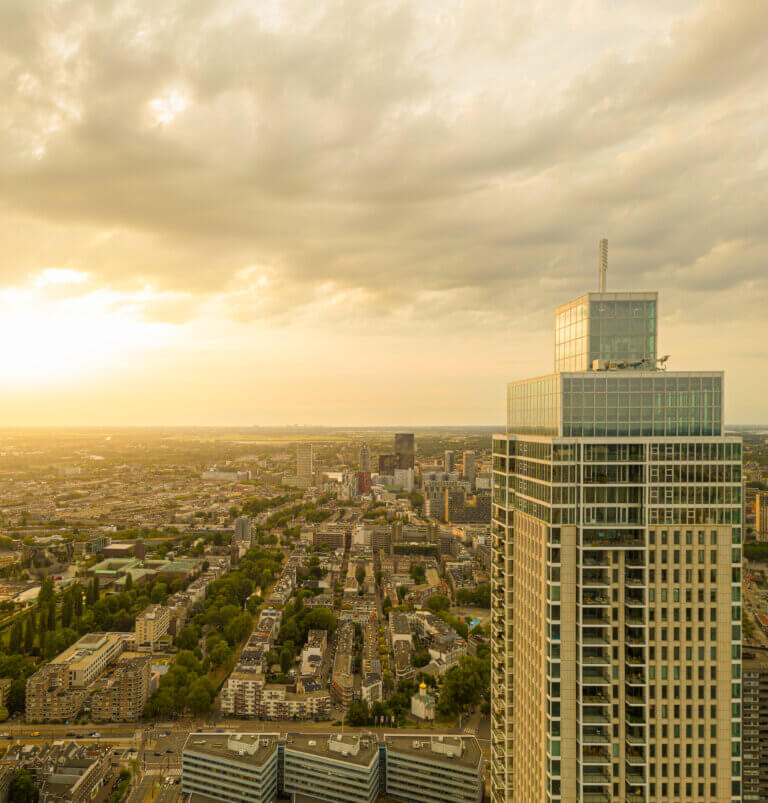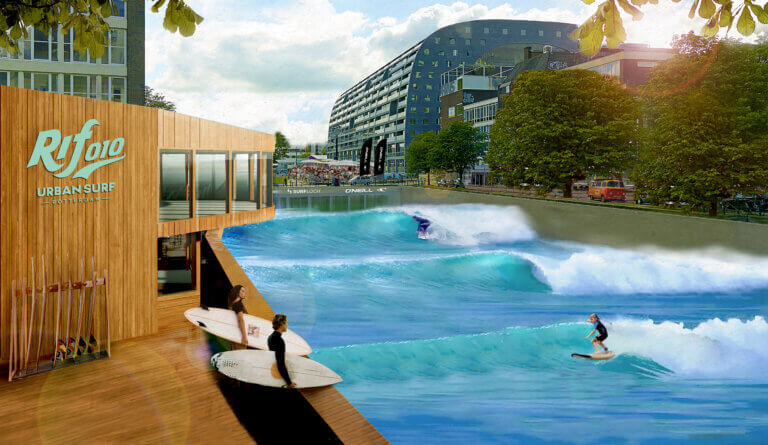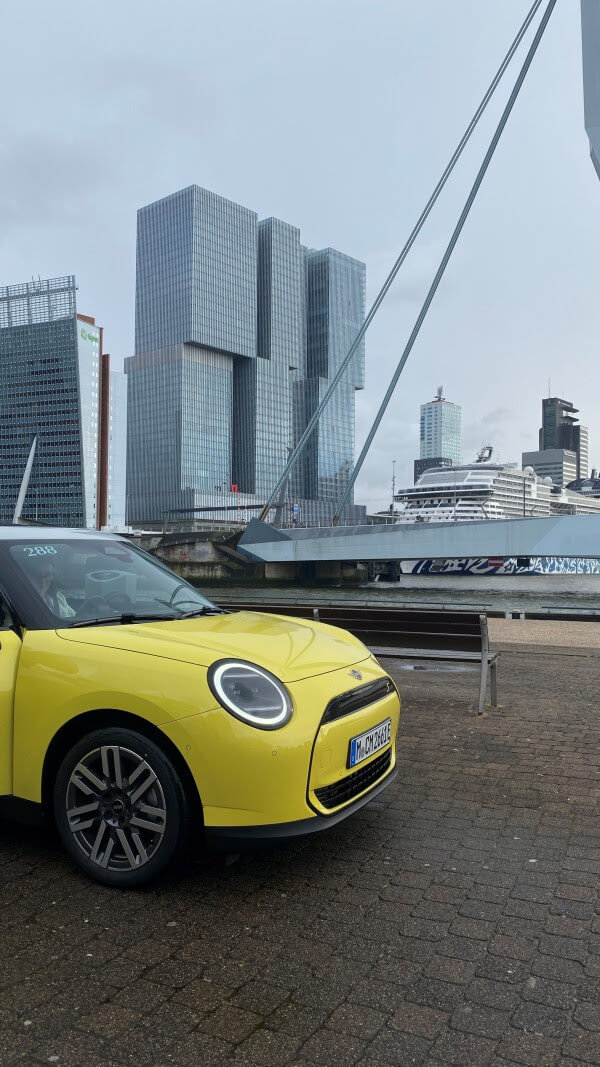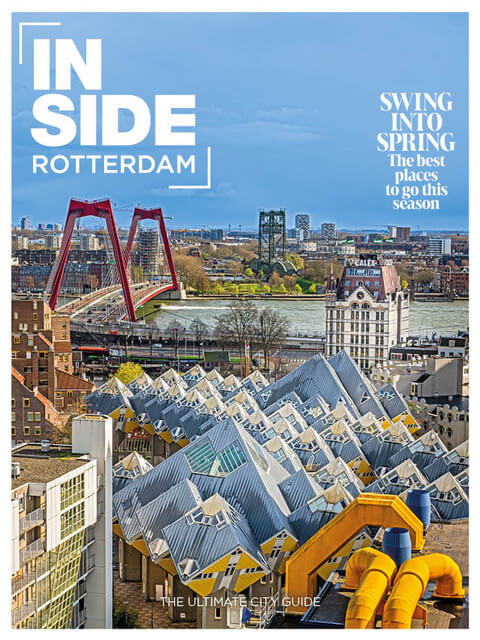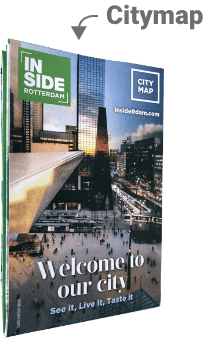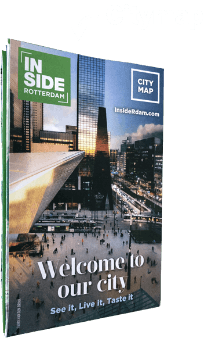Wedged between the city’s north and south is a unique area of Rotterdam called Noordereiland. Nowadays it’s a peaceful suburb, but it wasn’t always that way. During the Second World War, Dutch marines stood their ground on the old Hef Bridge, valiantly defending the city.
Words: Evelien Baks
Noordereiland is a residential island lying in the middle of the Maas river. It is sometimes called Montmartre on the Maas because of all the artists and designers that have settled there in recent years. These incomers are busy injecting new energy into the island, through music, exhibitions, lectures and, in the summer, À la Plancha, a fantastic pop-up fish restaurant that floats on the river. A great spot to enjoy a glass of sangria while watching massive container ships passing by. It was this very shipping traffic that led to the creation of Noordereiland in the 19th century. Home now to some 3,500 Rotterdammers, the island was the brainchild of a couple of clever individuals who were exploring ways to expand Rotterdam’s busy port. Their solution was to cut off a section of the southern part of the city and build a new port in the gap between the two bits of land. The Koningshaven was thus created and Rotterdam gained an island measuring 1.3 kilometres long and 100 metres wide in the process.
Stieltjesplein, just over the Koningshaven Bridge, is named for the man who sketched the first plans for the newly created area. His statue can be found in the Burgemeester Hoffmanplein, a long green oasis in the middle of the island. While you are there look out for the fountain with a statue of an angel on top, erected at the time of Queen Wilhelmina’s coronation in 1898. The new island soon became a place of great activity. Thousands of labourers moved there to work in the light-bulb factory on the Prins Hendrikkade and in a crate-making factory. A cheese and margarine factory also opened. There was a hotel and a famous café where workers flocked to on pay day. Liqueurs and jenevers were produced at Hulstkamp brewery, the name of which can still be seen on the beautiful old Art Nouveau building on the quay.
Noordereiland is perhaps best known for its perilous position during the Second World War when the German army began its invasion of Rotterdam. They reached the city on 10 May 1940, and four days of heavy fighting ensued around the Maas bridges. The Germans then occupied Noordereiland, and the rest is history. Their bombers destroyed a large part of the city centre but Noordereiland was spared, at least during this phase of the war. It was hit hard later on when the British began their bombing offensive against the Germans. Hundreds of houses on the island were reduced to rubble, the reason why so much reconstruction can be seen there nowadays. Having been somewhat neglected during the second half of the 20th century, the island is now growing in popularity. Walking there from the city centre via the red Willems Bridge, you can really appreciate the charm of the now protected cityscape. During your walk be sure to check out Noordereiland’s pride and joy: the recently renovated Hef Bridge. For years, trains rattled over this almost 100-year-old monument until the modernisation of public transportation saw railway lines go underground in 1993. It was from the top of this almost 50-metre-high bridge that some brave individual dived into the Koningshaven in the 1930s, establishing a world record.
Rotterdammers love to pop over and visit Noordereiland, which also happens to be the birthplace of one of the Netherlands’ most famous comic strip artists, Marten Toonder, creator of the Oliver B. Bumble and Tom Puss comic strips. Stroll through the island’s quiet streets, enjoy a cappuccino in the Van der Takstraat, and end your summer outing with a delicious grilled fish meal at the floating À la Plancha restaurant.
[Photo by Marc Heeman]


